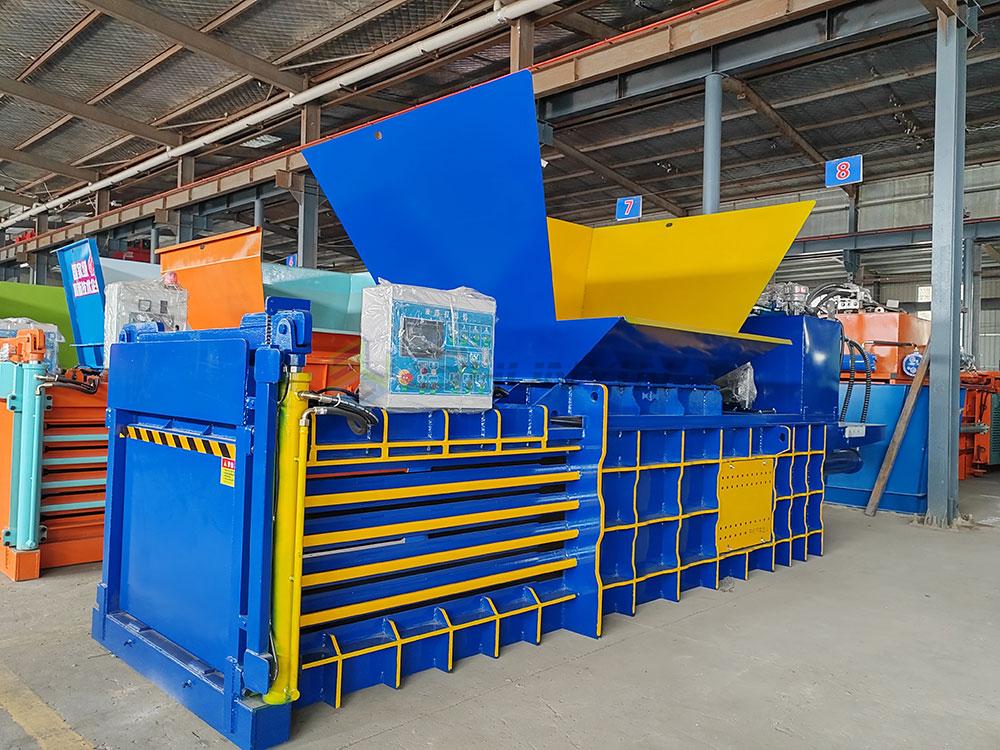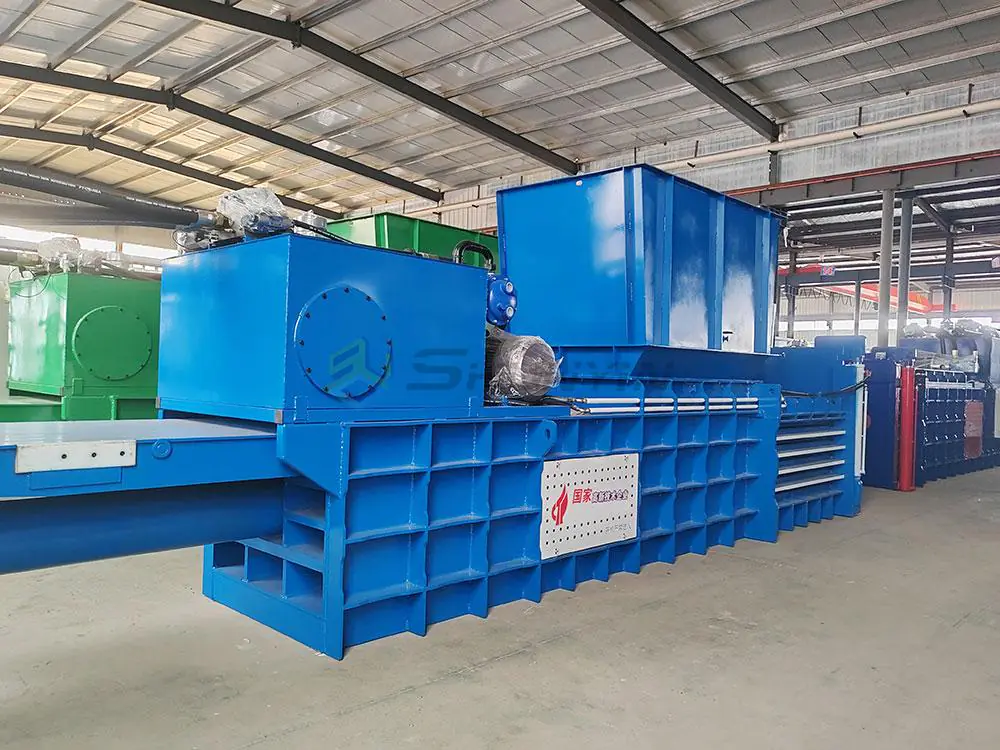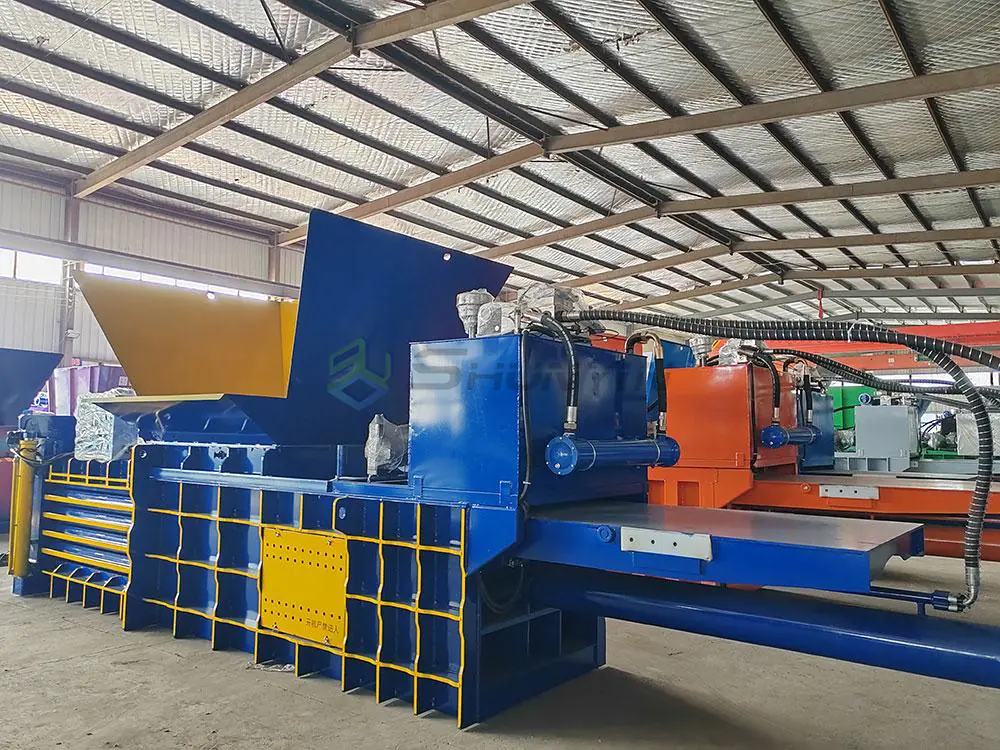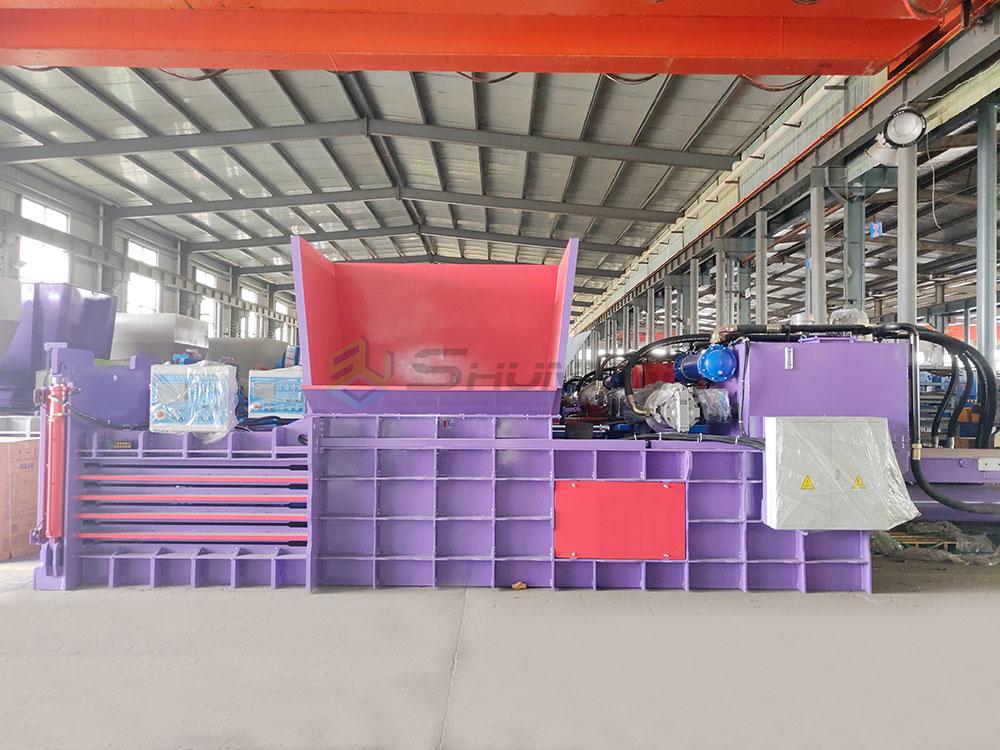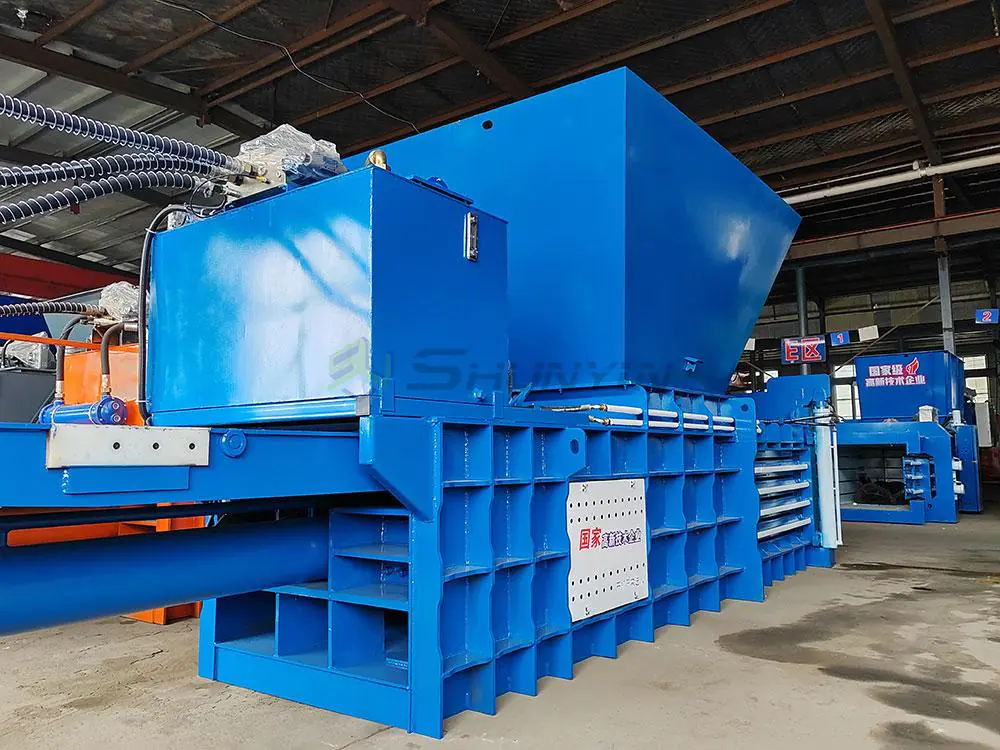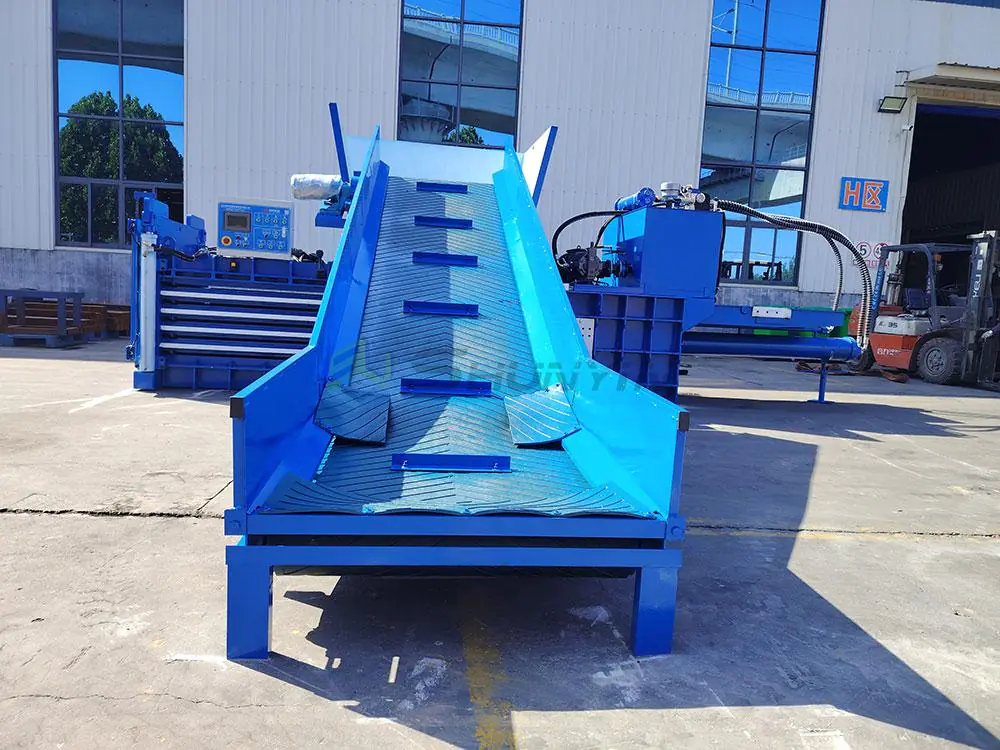
When our SYP-580 baler helped a Japanese factory achieve 880kg/m³ bale density (breaking national records), we saw how machine specs define recycling success. Let’s decode this essential equipment.
A baler machine compresses materials into transportable bales using 800-6000 PSI hydraulic force. Key specs: 20-300 tons compression, 45-750kW power, 40-150 cycles/hour. Industrial models process 1-30 tons/hour with 1200x800mm standard bale chambers, maintaining 90+ PSI pressure retention for 72 hours.
With 11 years optimizing baler configurations, I’ve identified 18 critical technical parameters. Let’s explore them through four vital questions.
What Is a Baler Machine?
A Bangkok mall reduced waste storage space by 79% using our vertical baler – the transformation proves these machines revolutionize waste handling.
Core functions:
- Compress recyclables into uniform bales
- Increase material density 8-12x
- Enable profitable recycling resale
- Meet transportation efficiency standards
- Reduce disposal costs 22-45%
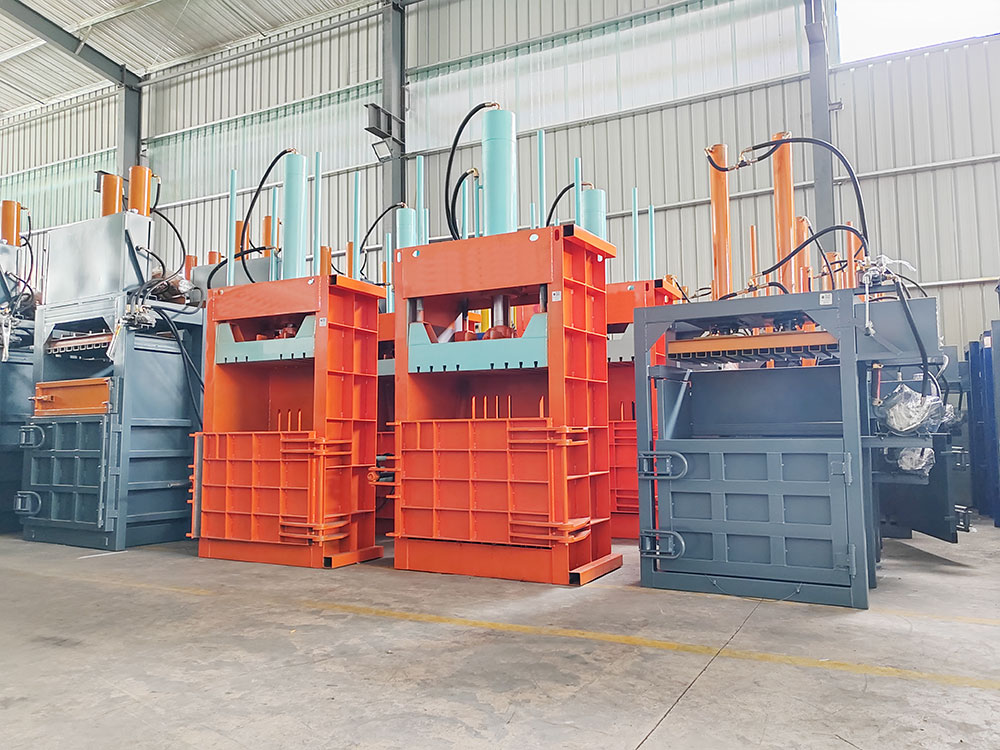
Technical Specifications Table
| Parameter | Entry Model | Industrial Grade |
|---|---|---|
| Compression Force | 20T | 300T |
| Chamber Size (mm) | 1000×500 | 2500×1500 |
| Power (kW) | 15 | 220 |
| Cycle Time (s) | 120 | 35 |
| Bale Weight (kg) | 80 | 2200 |
| Pressure Retention | 48h @ 60PSI | 96h @ 90PSI |
Our SYP-990 series uses German hydraulic pumps achieving 6-second decompression (industry average: 12s) – crucial for high-volume operations. Brazilian clients process 23% more material daily through this efficiency.
What Is the Difference Between a Baler Machine and a Compactor?
A Phoenix supermarket saved $400K over 3 years by switching from compactors1 to balers. The technical differences dictate profitability.
Critical distinctions:
| Balers | Compactors | |
|---|---|---|
| Purpose | Create salable bales | Reduce trash volume |
| Pressure Range | 2500-6000 PSI | 800-1500 PSI |
| ROI | 12-38% | None (cost center) |
| Output Value | $45-$220/ton | N/A |
| Maintenance | $0.10-$0.25/cycle | $0.30-$0.70/cycle |

Processing Cost Analysis
| Material | Baling Cost/Ton | Compacting Cost/Ton |
|---|---|---|
| Cardboard | $14 | $41 |
| Plastic Film | $19 | $58 |
| Aluminum Cans | $27 | N/A |
Game-changer: Our hybrid SYP-C800 processes both compressed trash and recyclables simultaneously – Detroit clients achieve 64% landfill diversion rates.
What Is the Classification of a Baler?
ISO 21940-32 standards classify balers into 9 categories. From our factory certifications process:
Primary classifications:
- By Force: Light (20-50T), Medium (50-120T), Heavy (120T+)
- By Cycle: Manual (<30/hr), Semi-Auto (30-100), Full Auto (100-300)
- By Certification: CE, OSHA, UL, Explosion-Proof
- By Materials: Corrosives (SS316), General (Hardox 450)

Safety Class Ratings
| Class | Pressure Leakage | Emergency Stop | Noise Level |
|---|---|---|---|
| A | 0.5% max | 0.2s response | <75dB |
| B | 1.2% | 0.5s | <82dB |
| C | 2.5% | 1.0s | <88dB |
Our CE-Class A balers feature triple safety locks – clients report 94% accident reduction. Critical for food plants needing <70dB operation (test our noise levels).
How Many Types of Balers Are There?
After installing 36 baler configurations last quarter, our technical team recognizes 31 variants. Core categories:
Material-Specific Balers:
- Cardboard (800-1200PSI)
- PET Bottle (1500PSI + crusher)
- Textile (Low-pressure)
- E-Waste (Anti-spark)
- Mixed Waste (Multi-ram)

Capacity Matrix
| Type | Tons/Hour | Bale Size | Energy Use |
|---|---|---|---|
| Vertical | 1-4 | 0.8×0.6m | 18kW |
| Horizontal | 5-18 | 1.5×1.0m | 55kW |
| Two-Ram | 8-22 | 1.2×0.8m | 68kW |
| Closed-Door | 12-30 | 2.0×1.2m | 88kW |
Taipei client case: Combining vertical textile baler with horizontal cardboard unit increased profits 213% through material separation. Our modular systems enable hybrid setups under single power supply.
Conclusion
Balers transform waste economics when matched with precise specifications – chamber size variance of 10cm impacts revenue by 18%. Our ISO-certified machines with 4-cylinder synchronization achieve 0.003mm compression plate alignment for maximum density.
Request free spec analysis – share your material types and volume for a customized machine recommendation. Our engineers will provide 3D models and ROI projections within 24 hours.


